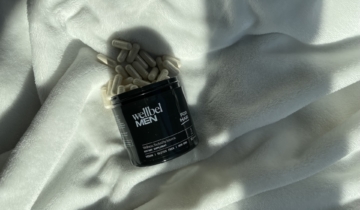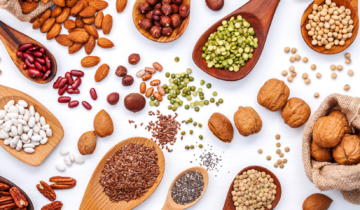Cycle Tracking & BBT
Cycle tracking consists of observing and measuring different hormonal biomarkers such as changing cervical fluid, tracking your body’s lowest resting temperature first thing in the morning (bbt temperature), energy, hunger levels, libido & more to determine where you are in your four-phase menstrual cycle. Cycle tracking can help women take back control of their hormonal health, reduce confusion surrounding their cycles and increase the chances of conception each cycle if pregnancy is a goal, however; you can also use cycle tracking to prevent pregnancy without having to rely on synthetic hormonal options of birth control. There is a learning curve to this method which can sometimes feel overwhelming to some women so in this article I’m going to break down the basics.
Cervical Fluid
As estrogen levels rise after menstruation, the cervix responds by producing increasingly lubricative and fertile mucus. The fertile window of your cycle begins with the onset of this more moist and wet quality cervical fluid. As ovulation approaches, hormones are at their peak and a more stretchy, clear, egg white quality mucus is produced. After ovulation, progesterone levels rise and end the production of cervical fluid which results in dry days with little or no cervical fluid. Every woman experiences the changes in cervical fluid differently and has their own “normal” so tracking this over several cycles to determine what your normal patterns are is very important.
Cervical fluid is one of the most important biomarkers to track because it really gives us a great indication of what our hormones are doing and if ovulation is approaching. During most of the cycle, the vagina is dry and acidic, and sperm cannot live for very long in that environment. However, the presence of estrogenic cervical fluid near ovulation neutralizes the acidity of the vagina and provides nourishment to the sperm and allows them to survive for days which is key for getting pregnant but also important to know if you are looking to avoid pregnancy.
Lack of cervical fluid is an issue I see often which can sometimes be due to low estrogen levels post birth control or even due to poor hydration since cervical fluid is largely made up of water. To support healthy cervical fluid production, be sure to hydrate with filtered water daily and consume plenty of healthy sources of fat such as avocado, fatty fish, coconut products, olives, olive oil, and nuts & seeds.
Vaginal infections can make it harder to track cervical fluid changes accurately so be sure to see a medical professional to resolve any issues if needed.
BBT
Basal body temperature is your lowest resting temperature first thing in the morning before getting up out of bed. We track this using a BBT specific thermometer and log it into a cycle tracking app or even manually on a chart. Our BBT temperature is lower in the first half of the cycle (usually between 97.0 and 97.7 degrees Fahrenheit) and rises after ovulation due to increasing progesterone levels (ideally 97.8 degrees or higher). We cannot make progesterone without ovulation occurring so it’s a very accurate way of confirming ovulation. Once ovulation has been confirmed, you know that you will absolutely get your period in about 2 weeks, or you will be pregnant. Your period is never late, ovulation can be delayed which makes it look like your period is late.
BBT temperatures can also tell us if our thyroid is functioning optimally (overall low temps throughout the cycle can indicate low thyroid function) and can also tell us if we are making enough progesterone in the second half of our cycle. Adequate levels of progesterone in the second half of our cycle is important for maintaining the uterine lining for healthy implantation but it’s also for keeping symptoms of PMS like anxiety and moodiness away.
There are several things that can hinder the accuracy of your BBT temperature number. These include illness, certain medications, alcohol consumption, thyroid issues, breastfeeding, and frequent night waking especially less than 3 hours before taking your temperature. It’s also ideal to be taking your temperature around the same time everyday.
*If you do not ovulate regularly due to irregular cycles, post birth control syndrome or PCOS, work night shifts, or frequently wake with other children throughout the night, there are other options that can help you accurately track your BBT along with other biomarkers such as the Temp Drop device.
LH Testing
Some women may choose to monitor their LH using an at home urine test when trying to conceive. High estrogen levels in the ovulatory phase will signal the brain to produce LH which triggers the egg to be released from the follicle aka ovulation. We begin testing LH when we first notice a change to more moist or wet quality cervical fluid until we get a positive reading. Once a positive reading is achieved, there is no need to continue to test. Ovulation occurs within 24-36 hours after the LH surge.
I never recommend LH tests as a step 1 if a client has never tracked cervical fluid or BBT temperatures first because they are usually not necessary, but they can be helpful for women with more confusing cycle patterns.
*Women with PCOS often have higher LH secretion which can make the tests inaccurate.
Other signs and symptoms to look out for…
There are a few other signs that can help us determine where we are in our cycle. Energy levels tend to be higher in the follicular phase after menstruation through the ovulatory phase thanks to rising hormone levels and tend to drop off in the second half of your cycle. An increase in libido is a great way to tell if ovulation is approaching since our rising estrogen will make us more interested in sex. And finally, metabolism increases after ovulation which you can notice by an increase in hunger levels.
For more information about cycle tracking and natural hormone support, be sure to check out my other articles here on GLW and join me on Instagram at jvictoriahealth where you can get access to tips, recipes, and information about my free workshops and programs.





 No products in the cart.
No products in the cart.